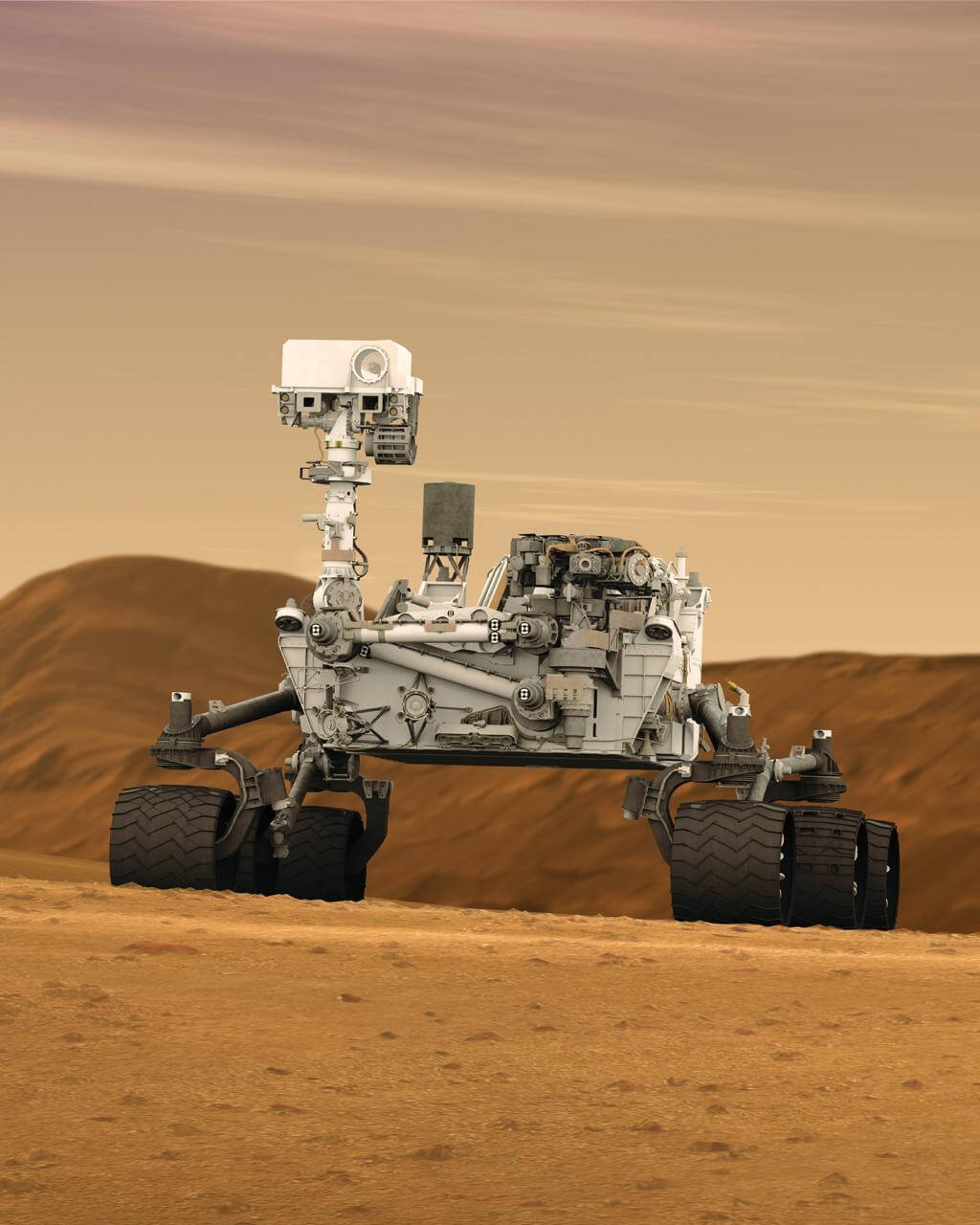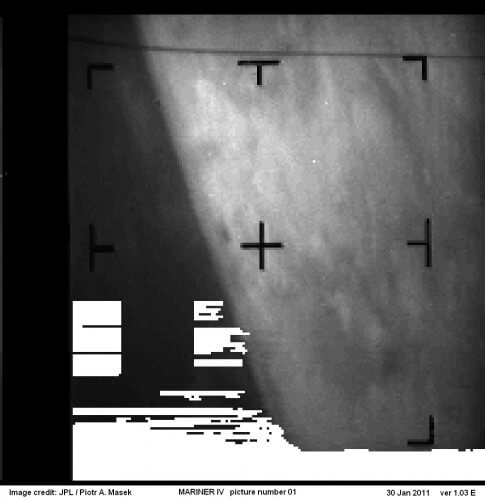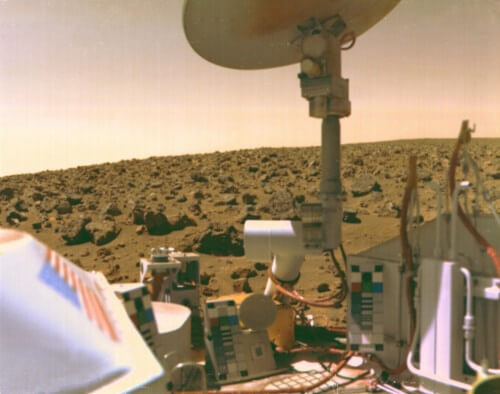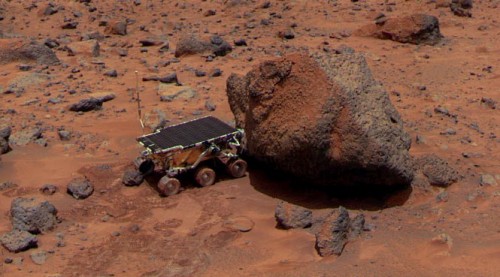On the morning of Monday August 6th, one of the greatest events in the history of space exploration and the solar system will take place; The mobile laboratory "Curiosity" will land on the soil of Mars, in the most complex autonomous operation ever carried out.

The article was first published on Yoav Landsman's blog critical mass.
On the morning of Monday August 6th, one of the greatest events in the history of space exploration and the solar system will take place; The mobile laboratory "Curiosity" will land on the soil of Mars, in the most complex autonomous operation ever carried out.
2.5 billion dollars were invested in the MSL (Mars Science Laboratory) program, which includes the "Curiosity" ground vehicle, and the expectations for it are very high. Its ability to collect and analyze information on the composition of the soil and the Martian environment is comparable to a geologist carrying an entire laboratory with him. In addition, the engineering capability that enables such a complex task is unprecedented, and brings us another significant step closer to a manned expedition to the Red Planet.
Before I add more words, please watch the video that presents the unprecedented challenge of landing Curiosity on the surface of Mars. This is by far the best NASA technical video released to the public to date:
Okay, so it's not easy to land on Mars, but they've done it quite a few times, right? So what exactly is the story here?
Well, to clarify the level of the challenge, you can examine the fascinating history of flights to Mars. It's here, beyond the fold.
opening shot
The space race started all at once in October 1957 when "Sputnik-1", the first artificial satellite, was successfully launched into orbit around the Earth. In just a few years, a tremendous technological leap was achieved in both rockets and space technologies and sciences, driven by the powerful political means of the Cold War.
Many remember that the first man was launched into space by the Soviets in April 1961. A month later, the Americans also launched a man into space (suborbital flight only, by the way). What is rarely mentioned is that even before Yuri Gagarin's famous flight, the Russians managed to photograph the far side of the moon and even land on it (the more accurate term would be "hit it"), and launch two spacecraft to Mars and two to Venus (attempts that ended in three launch failures, and one lost spacecraft ). Despite the failures of the launchers, the very design and production of spacecraft to other planets is an achievement in itself, which the Americans were not even close to.
hurdle race
The Americans were the first to pass by Mars and take pictures with the robotic spacecraft Mariner-4 at the end of 1964, after half a year earlier the launch of Mariner-3 failed due to the failure to open the launcher canopy. In the meantime, the Soviets managed to launch three more spacecraft to Mars besides the two already mentioned, two of which failed to leave orbit around the Earth, and one was lost in space after radio communication was interrupted due to a malfunction.

The race continued. The Soviets sent Zond-2 two days after Mariner-4, and this time its orbit was perfect for a nice close pass by Mars...but communication was cut off before pictures were taken.
For several years, no additional spacecraft were launched to Mars, mainly because the powers focused on launching military satellites, on manned programs, on programs to explore the moon, and on many attempts to reach Venus. A lot of attempts and a lot of failures.
In early 1969, the United States launched Mariner 6 and 7 three days apart to Mars. Surprisingly, the Soviet Union launched two of their own spacecraft at the exact same time to the same destination. There were two differences between the tasks; One is the result test, in which the Americans produced about 200 photographs of different regions of Mars from the two spacecraft, while the two Soviet spacecraft failed at launch. The second is that while the Americans launched two spacecraft for a flyby, the Soviets built spacecraft designed to remain in orbit around the red planet.
The proximity of the launch times is not accidental, because it is influenced by the geometrical position of Mars and the Earth, which reaches an optimal position for launches only at very specific times.
Achievements versus innovation
Two years later, in May 1971, the effort seems to be reaching its peak, and so are achievements:
The beginning will sound familiar to you - the Americans catch up and launch Mariner-8, which is an Orbiter to the orbit of Mars, but the launch failed...
Two days later, the Soviets launch Cosmos-419, this time - note - a lander... which fails to leave Earth's orbit and burns up on re-entry into the atmosphere.
It's hard for me to imagine how they are able to continue after so many failures... but when there is political leverage then there is a budget and motivation.
That same month, the Soviet Union launches Mars-2 and 3, identical spacecraft that include a probe and a lander each, and the Americans launch the Mariner-9 probe. The Mars 2 and 3 orbiters provided some images, but the landers did not perform as planned: the Mars 2 lander burned up upon entering the Martian atmosphere and Mars 3 landed, but lost contact after less than 20 seconds on the ground. She managed to transmit a fragmentary image from which nothing can be deduced. It is worth mentioning that both landers contained a robotic arm and a small vehicle that could have moved about 15 meters away from the lander, if the landers had been able to operate (in fact it was the first rover on Mars).
Mariner-9, on the other hand, was a great success producing thousands of images and almost complete mapping of Mars. The huge and famous canyon of Mars, Valles Marineris, which stretches over 4,000 kilometers, is named after her.
Knockout
In the summer of 1973, the Soviet Union launched four (!) spacecraft to Mars: Mars 4 and 5 had identical orbits, the first missed the planet and the second succeeded and even survived several days in orbit around it. Mars 6 and 7 were landers, the first crashed in the landing attempt and the second missed Mars and was lost in space. You may have noticed that Mars does not get along well with Soviet-made spacecraft. It was precisely on Venus that they set unprecedented records.

In the summer of 1975, the United States launched the two Viking spacecraft that consisted of a probe and a lander, and both succeeded in their mission above and beyond the mission plan. They survived for several years, especially the Viking-2 rover, which transmitted over 50,000 photographs of the surface trajectory of Mars. The landings themselves were large and sophisticated for that time, and included a laboratory for material analysis and a scoop for collecting soil samples.
When they chose the Viking landing area, they were afraid of landing on a slope, or in an area with rocks, or anywhere that is not completely flat, so they landed the landings in geologically "boring" sites. Although it is more important that the lander survives, it was clear that we must have a lander capable of movement.
technological progress
In July 1988, the Soviet Union launched two spacecraft that each included a probe to Mars and a lander to the moon Phobos! Unfortunately, Phobos-1 was lost en route, and Phobos-2 suffered a computer or communications failure moments before landing on Phobos.
In 1992, the Americans sent the state-of-the-art Mars Observer spacecraft, which was lost shortly before reaching its destination.

In November 1996, two spacecraft were launched to Mars. One is American, the Mars Global Surveyor spacecraft, which completed an extended mission of mapping and surveying with improved resolution, and its mission was extended three times until it ended in 2006. The other is the Russian Mars-96 mission, which included a spacecraft, two landers, and two impactors that are supposed to penetrate 5- 6 meters into the ground. An ambitious and special mission, but in order to explore Mars you must first be able to leave Earth... The launch failed and the mission went down the drain, taking with it the continuation of the Russian space program for the next decade.
In December 1996, the United States launched Mars Pathfinder, which includes a lander (named after Carl Sagan) and the Sojourner vehicle, which was the first rover to operate on Mars. His mission lasted about three months. The lander landed using a parachute and a stack of airbags to cushion the blow. The landing ellipse, the area where the lander was expected to land, was 200 by 70 kilometers in size. Really not an accurate landing.
Sojourner. Photographed by the Pathfinder lander
At the end of the 90s, the sequence of failures returned. The Russians are no longer in the race after the collapse of the Soviet bloc and the economic troubles that followed, but new players have begun to emerge.
In July 1998, a Japanese spacecraft called Nozomi was launched for a mission to Mars, but on a very unusual route that should bring it there after five years, but with the investment of a very small amount of fuel. Nozomi was hit by a solar storm and the mission got complicated and finally ended with a loss of communication before reaching the destination.
In December 1998 - January 1999, the United States launched two spacecraft to Mars - the Mars Climate Orbiter which crashed on the ground due to a design error that included mixing up the metric system and the imperial system (I really have nothing to add here. It's really... speechless), and the Mars Polar Lander which also crashed She is, but at least because of an electrical fault.
The XNUMXs - mostly successes
In 2001, Mars Odyssey was launched, a state-of-the-art rover that continues to operate to this day and will serve as a relay for Curiosity during landing.
The year 2003 is the year the European Union's space agency brought a spacecraft to Mars - Mars Express, which carried the Beagle-2 lander all the way, but it crashed on landing. Mars Express will serve as a backup for communication between Curiosity and Israel.
The famous Spirit and Opportunity rovers, both part of the Mars Exploration Rover mission, or MER for short, were launched separately in the summer of 2003 and landed on different sides of Mars. The landing was carried out similarly to the Pathfinder, but the landing ellipse was reduced to 83 by 10 kilometers. Still far from being accurate, so they still had to land in large areas free of obstacles.
In 2005, the Mars Reconnaissance Orbiter, or MRO, was launched, which is the most modern and sophisticated orbiter currently around Mars. If any spacecraft is capable of photographing Curiosity during landing or on the ground, this is it, and the intention is to do so, of course.
In 2007, the American lander Phoenix was launched, which landed using rockets in the North Pole region of Mars. Like the Viking, it is also a stationary lander.
To close the circle, in November 2011, two spacecraft were launched to Mars, one American and its name is MSL and it is going to land the largest and most sophisticated rover on Mars in the craziest and most innovative method ever used and yet funded by the government. The second was made in Russia, and its name was Phobos-Grunt. Its mission was ambitious as well - landing on the moon Phobos and returning a soil sample from it, along with sending a hitchhiker in the form of a Chinese satellite that would remain orbiting Mars. Long-time readers know that Phobos-Grunt had her dispersal in the South Pacific earlier this year.
Interim summary: over 3 failures for every successful mission
As you saw in the video at the beginning of the entry, Curiosity's landing is very complex and dangerous. Its advantage will be that the landing ellipse is only 20 by 7 kilometers, so it can be landed inside a crater and next to the side of a huge mountain.
Getting to Mars and surviving the passage through the atmosphere is a very challenging task. Every success is based on lessons from many failures, and the ability to learn from them. Today, only a fraction of the budgets previously invested in the space program remain, and an equally important challenge is to use them effectively to create groundbreaking missions.
All that remains is to strengthen the hands of the MSL mission personnel. May we all have a soft and successful landing.
In the following entries I will describe the stages of the landing, including details that do not appear in the video, and Curiosity's scientific mission. All this in the coming days!

13 תגובות
Waiting to see the successful landing!
It is not so surprising that crazy methods are tried with government funding. In fact, it is easier for government institutions to do crazy things about which a commercial boss would ask questions such as "is it the most likely", "what are the chances", "what did we get out of it", etc.
From the article: "The best NASA technical video released to the public so far"
And here's the link http://www.youtube.com/watch?v=Ki_Af_o9Q9s
And I want Bar Refaeli in my bathroom..
….There are some types of things in this world that require the most effort in order to succeed. buddy
Write on the pictures Image: NASA. Why an illustration? I want pictures, not an illustration.
Emmanuel, the first commenter gave the link.
Thanks for the review, the link to the simulation movie is missing
Nice article/review
Spectacular visualization of the landing on Mars, you can start watching from minute 1:40
http://www.youtube.com/watch?v=P4boyXQuUIw